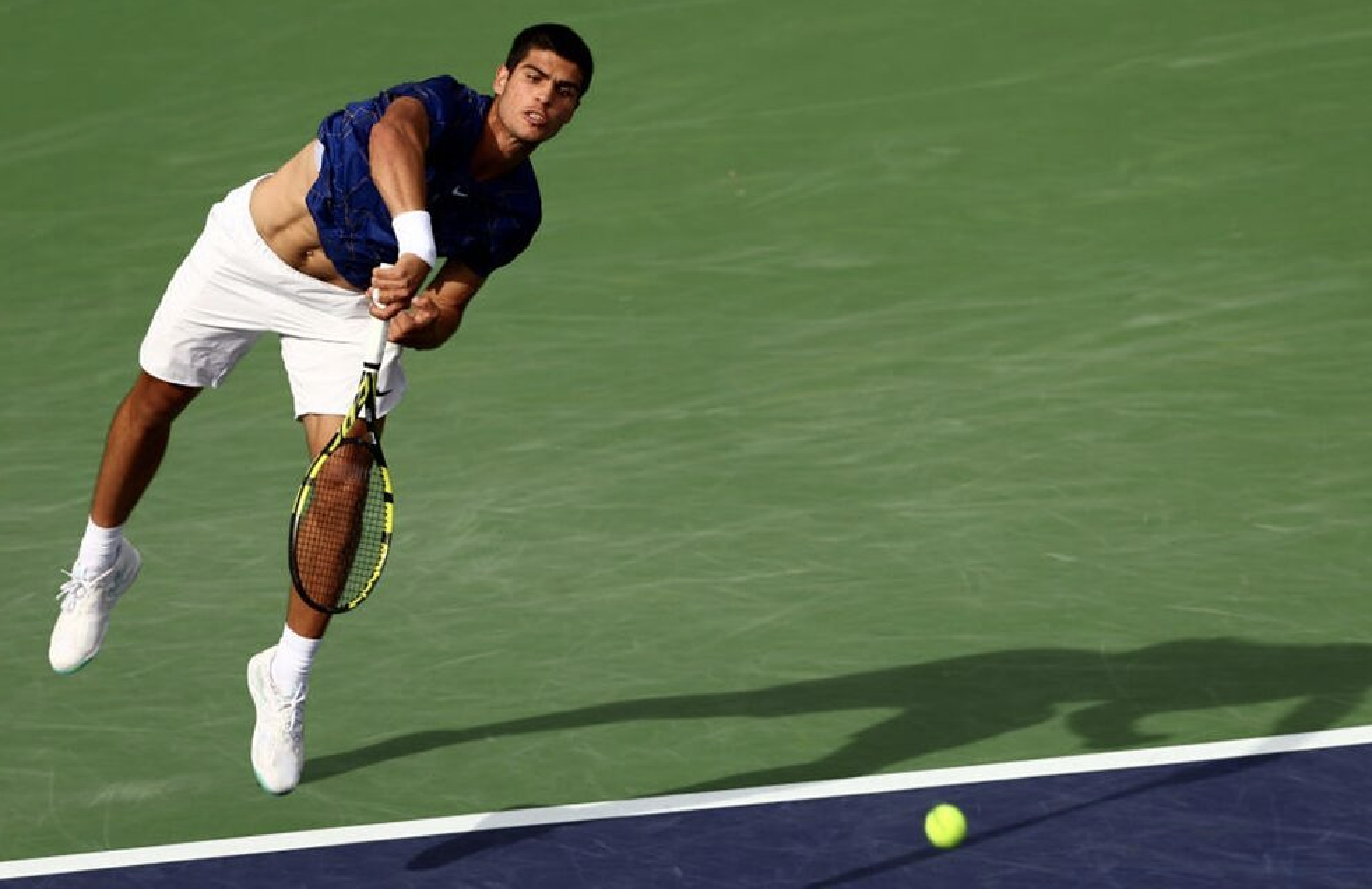G’day,
Most first serves in tennis go at the corners, chasing aces and return errors.
And then there is 18-year-old Spanish sensation Carlos Alcaraz. The body server.
Alcaraz is lighting the tennis world on fire in Miami this week with a breathtaking display of power tennis that now has him in the quarter-finals against 22-year-old Miomir Kecmanovic. Here’s Alcaraz’s road to the quarters:
- Rd 64 def. Marton Fucsovics 6-3, 6-2
- Rd 32 def Marin Cilic 6-4, 6-4
- Rd 16 def Stefanos Tsitsipas 7-5, 6-3
- Qtrs next vs Kecmanovic
What’s intriguing is that in every match Alcaraz has played, he has served a lot more at the body with his first serve than his opponent has against him.
Rd 16 vs. Stefanos Tsitsipas
In the Deuce court, Alcaraz peppered the “backhand jam” location, hitting just over half (51%) of his first serves at the body. The number one place Alcaraz served in the Ad court was at the body as well, with 39%.
Hawk-Eye Graphic: Alcaraz 1st Serve Location vs. Tsitsipas
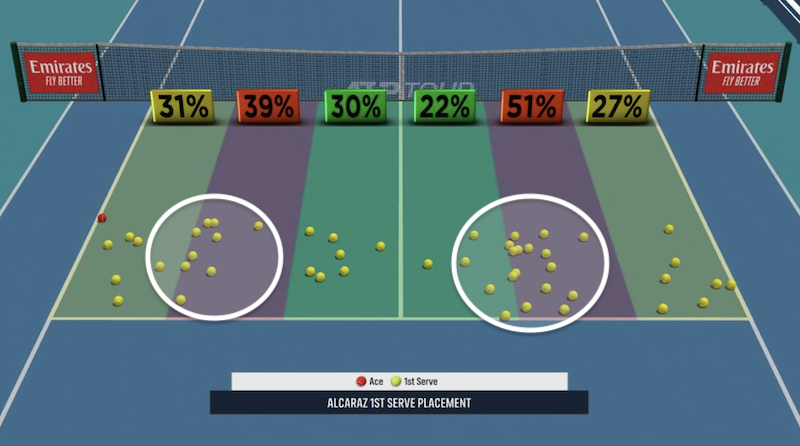
It’s fascinating to compare Tsitsipas’ 1st serve location, which only had one first serve (barely) go into the middle third of the service box in either the Deuce or Ad court.
Hawk-Eye Graphic: Tsitsipas 1st Serve Location vs. Alcaraz
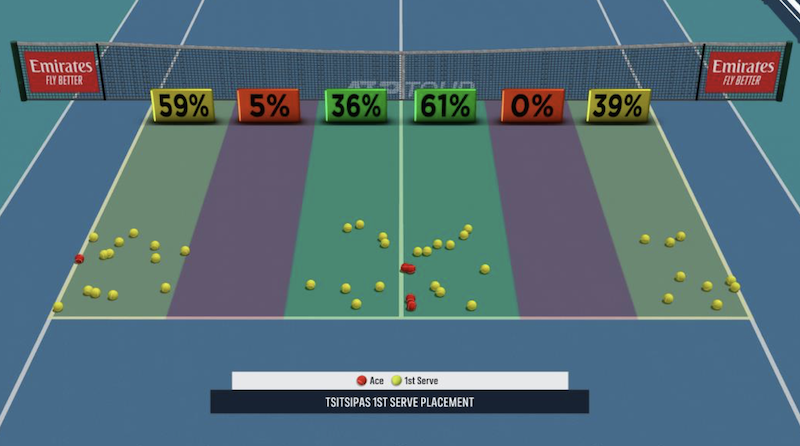
Like this analysis? Please also consider the following five webinars.
Webinar 3: Serve Strategy & Patterns
Webinar 1: Winning Singles Strategy
Webinar 10: Primary & Secondary Patterns
Webinar 21: Serve & Volley / Return & Volley
Here are the first serve statistics from the match:
- Aces = Tsitsipas 5 / Alcaraz 1.
- 1st Serve % = Tsitsipas 56% / Alcaraz 69%
- 1st Serve Points Won = Tsitsipas 75% / Alcaraz 74%
- 1st Serves Unreturned = Tsitsipas 34% / Alcaraz 30%
Serving at the body definitely had an impact on aces. Alcaraz only hit one, while Tsitsipas collected five.
Now, let’s combine the metrics of 1st Serves Made and 1st Serves Won to figure out a First Serve Rating. Here is how to understand what a First Serve Rating is all about. Remember, percentages are out of 100, so we are looking for how many 1st serve points a player would win out of 100, including 1st serve faults and 1st serves in play.
Tsitsipas made 56% and won 75%, so 56 x .75 = 1st Serve Rating of 42.
Alcaraz made 69% and won 74%, so 69 x .74 = 1st Serve Rating of 51.
Alcaraz’s first serve rating of 51 was vastly superior to Tsitsipas’ rating of 42. First serves at the body were a big part of that.
The pictures below are of Alcaraz’s first-serve placement against Fucsovics and Cilic.
Hawk-Eye Graphic: Alcaraz 1st Serve Location vs. Fucsovics
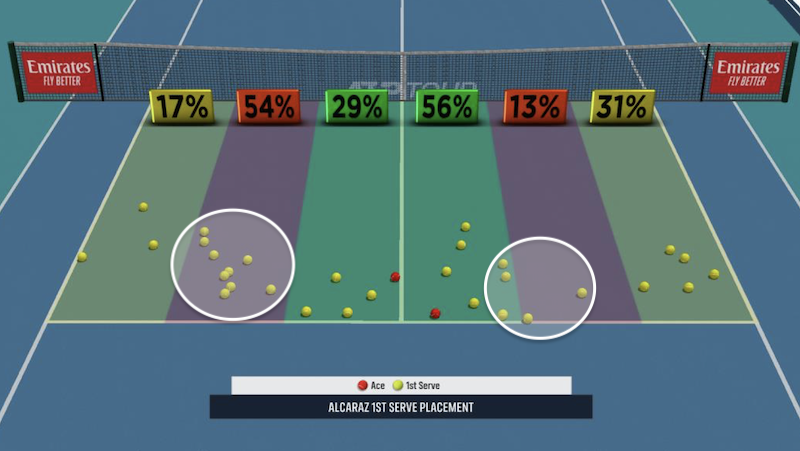
Hawk-Eye Graphic: Alcaraz 1st Serve Location vs. Cilic
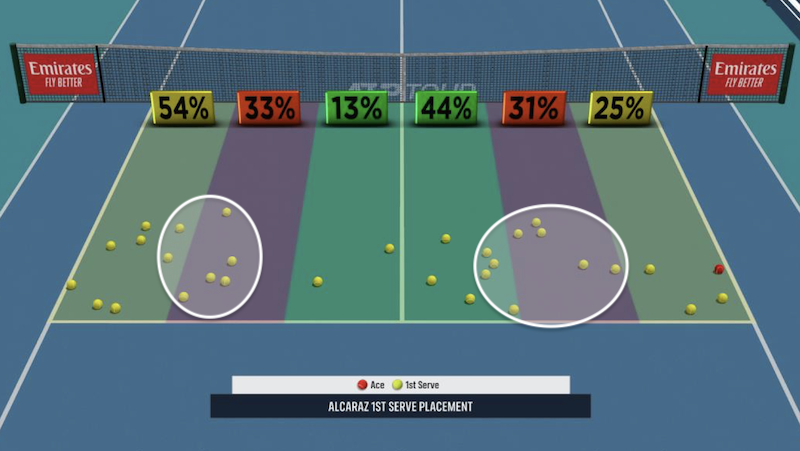
As you can see from both matches, Alcaraz really likes to target the body with his first serve. The 54% vs. Cilic at the body in the Ad court is particularly interesting. Like most players, Cilic is more solid off his backhand return, and with his height, also has good reach to the corners. It looks like many of those body serves went to the “forehand jam” location to handcuff Cilic’s returns.
Cilic only served 4% to the body in the Deuce court and 4% to the body in the Ad court against Alcaraz. Fucsovics served 18% at the body in the Deuce court and 0% at the body in the Ad court against Alcaraz as well.
SUMMARY
What’s interesting is that Alcaraz had 30% of his first serves unreturned, primarily going at the body, while Tsitsipas had 34% unreturned serving almost all at the corners. Overall, Alcaraz did not suffer in this area at all. First serves at the body is definitely something to keep track of to find more patterns of play associated with this first-strike tactic. Things to look for include:
- Alcaraz uses his Serve +1 shot to finish points in three-shot rallies.
- Getting short returns to approach to the backhand.
- The returner has to slice jam returns back instead of stepping to the ball to drive them.
Lastly, look at what Tom Gullickson (former US Davis Cup coach) wrote on Twitter about this blog post.
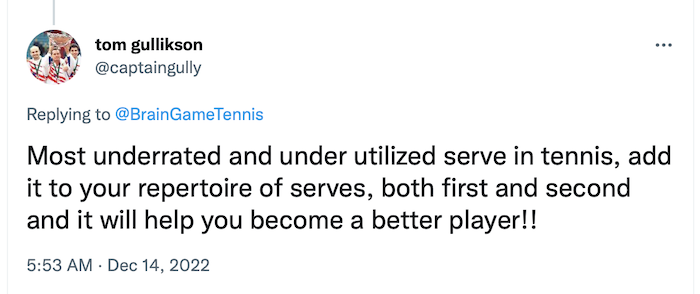
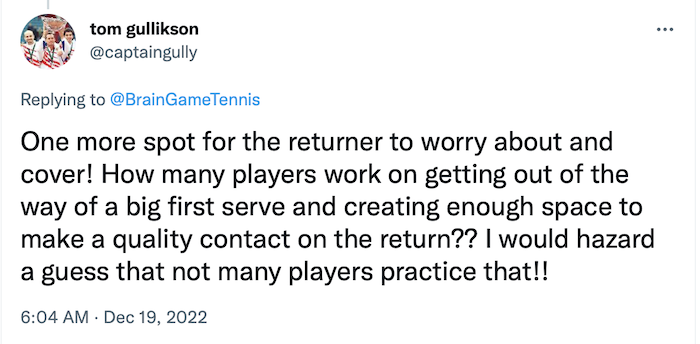
The next time you play a set, why don’t you experiment with more body serves as well to see if it is also beneficial for your own game. Keep track if they go body forehand or body backhand and where the return typically comes back in play – if at all.
All the best,
Craig

